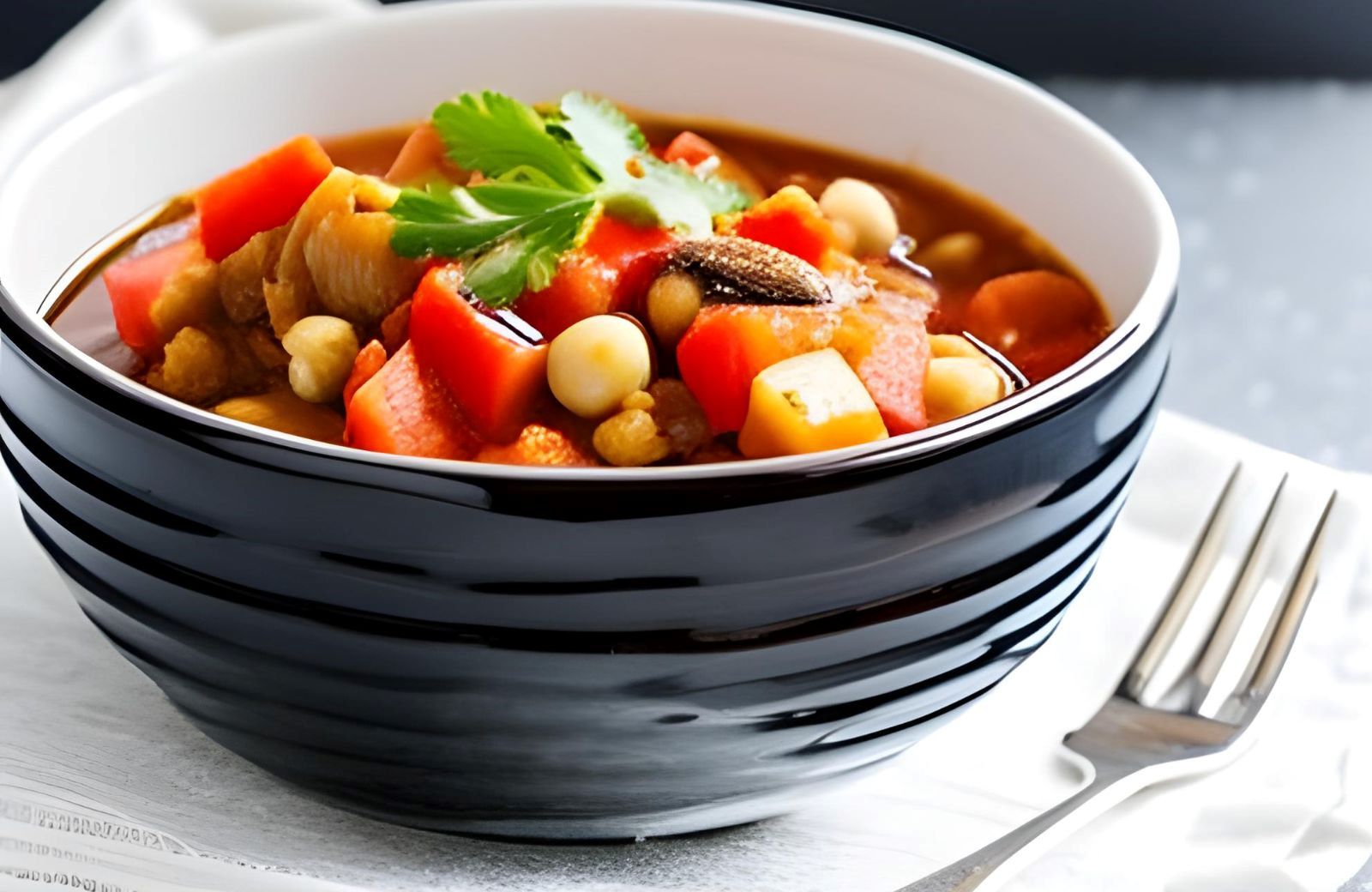
Stew is a hearty and comforting dish that is perfect for chilly days. It is a combination of meat, vegetables, and flavorful broth that is simmered slowly to create a delicious and filling meal. Making a large batch of stew allows you to enjoy it over several meals, but what if you have leftovers that you want to freeze for later? Freezing stew is a great way to extend its shelf life and have a convenient meal ready whenever you need it. By following a few simple steps, you can freeze stew properly and preserve its taste and texture. In this article, we will provide you with a step-by-step guide on how to freeze stew effectively.
Here’s a guide on how to freeze stew:
Step 1: Prepare your stew
Before freezing your stew, it’s important to ensure that it has been fully cooked and cooled to room temperature. This step is crucial for both safety and maintaining the quality of the stew during the freezing process. Here’s why it matters:
- Safety: Cooking the stew fully before freezing helps eliminate any potential bacteria or harmful microorganisms that may be present in the raw ingredients. Freezing does not kill bacteria, but it can temporarily halt their growth. By cooking the stew thoroughly, you minimize the risk of foodborne illnesses when you later thaw and reheat the stew for consumption.
- Texture and flavor preservation: Cooling the stew to room temperature before freezing prevents the formation of large ice crystals within the stew. Rapid freezing at high temperatures can cause these crystals to form, which can damage the texture of the ingredients and lead to a loss of flavor when the stew is thawed and reheated. Allowing the stew to cool gradually helps maintain the integrity and taste of the cooked ingredients.
- Versatility: Stews come in various forms, such as beef, chicken, lamb, or vegetarian options with beans and vegetables. Regardless of the type of stew you’re preparing, ensuring it is fully cooked before freezing allows you to enjoy the convenience of a ready-to-eat meal in the future. Whether you’re craving a classic beef stew or a flavorful vegetarian option, you can freeze it without compromising its quality.
Here’s how to go about it:
- Choose your ingredients: Select the meats, vegetables, and seasonings you want to use in your stew. Common choices include beef, chicken, lamb, carrots, potatoes, onions, garlic, herbs, and spices. You can customize the stew to your taste preferences or follow a specific recipe.
- Cut and season the meat: If you’re using meat in your stew, trim off any excess fat and cut it into bite-sized pieces. Season the meat with salt, pepper, and any other desired spices to enhance the flavor. Browning the meat in a hot skillet before adding it to the stew can add depth to the dish.
- Prepare the vegetables: Wash, peel, and chop the vegetables into uniform pieces. This ensures even cooking and a consistent texture in the finished stew. Some vegetables may require longer cooking times, so adjust the size of the pieces accordingly. For example, root vegetables like carrots and potatoes may need larger chunks compared to quicker-cooking vegetables like peas or bell peppers.
- Sauté the aromatics: Heat some oil or butter in a large pot or Dutch oven over medium heat. Add diced onions, minced garlic, and other aromatic ingredients like celery or leeks. Sauté them until they become fragrant and lightly caramelized, which adds depth of flavor to the stew.
- Add the meat and liquid: Once the aromatics are cooked, add the seasoned meat to the pot. Stir and cook until the meat is browned on all sides. Then, pour in the liquid components such as broth, stock, wine, or water. The liquid should cover the ingredients in the pot but not overwhelm them.
- Add the vegetables and seasonings: Drop in the chopped vegetables, herbs, and spices. This is also the time to add any additional flavorings like Worcestershire sauce, tomato paste, or soy sauce. Stir everything together to distribute the flavors evenly.
- Simmer and cook: Bring the stew to a gentle boil, then reduce the heat to low. Cover the pot and let the stew simmer for a couple of hours or until the meat is tender and the flavors have melded together. Stir occasionally to prevent sticking or burning.
- Adjust the seasoning: Taste the stew and adjust the seasonings to your preference. You may need to add more salt, pepper, or herbs at this stage. Remember that flavors can intensify after freezing, so it’s better to slightly under-season the stew initially.
By following these steps, you can prepare a flavorful and well-cooked stew as the foundation for freezing. The careful selection and preparation of ingredients, along with proper seasoning, contribute to a delicious stew that will freeze and thaw well while maintaining its taste and texture.
Step 2: Choose freezer-safe containers
Selecting the appropriate containers for freezing your stew is essential to maintain its quality and prevent freezer burn. Here’s why it’s crucial and how to choose the right containers:
- Preservation of quality: Freezer-safe containers are designed to withstand low temperatures and protect the stew from moisture loss and freezer burn. They create a barrier that helps maintain the flavor, texture, and overall quality of the stew during freezing.
- Airtight sealing: Using airtight containers or resealable freezer bags ensures that no air can enter or escape, which helps prevent the formation of ice crystals and protects the stew from exposure to the dry environment of the freezer. This sealing mechanism helps preserve the taste, aroma, and moisture content of the stew.
- Durability and insulation: Freezer-safe containers should be made of materials that can withstand the extreme temperatures of the freezer without cracking or becoming brittle. Look for containers that are specifically labeled as freezer-safe or are designed for long-term food storage. They should also be sturdy enough to resist impact or pressure changes that may occur in the freezer.
- Cleanliness and dryness: Before using any containers, ensure they are clean and dry. Cleaning them removes any potential contaminants that could affect the quality of the stew. Drying the containers thoroughly prevents the formation of ice crystals due to moisture in the containers, which can negatively impact the texture and taste of the stew.
When selecting freezer-safe containers:
- Choose airtight containers: Opt for containers that have a secure and tight-fitting lid or resealable freezer bags with reliable zip-lock closures. This prevents air from entering and freezer odors from affecting the stew.
- Consider material: Look for containers or bags made of materials such as rigid plastic (specifically labeled as freezer-safe), glass, or heavy-duty foil. These materials provide insulation and help maintain a consistent temperature for the stew.
- Size and portioning: Select containers that are appropriately sized for the amount of stew you plan to freeze. Consider whether you want to freeze individual portions or the entire batch. Having a variety of container sizes can offer flexibility when you want to thaw only a portion of the stew.
- Stackability: If space is a concern in your freezer, choose containers that can be stacked easily without causing damage to the stew or other items in the freezer. This allows for efficient use of the available freezer space.
By choosing freezer-safe containers that are airtight, and made of durable materials, and ensuring they are clean and dry, you can effectively protect the stew from freezer burn and maintain its quality during freezing. Proper containers contribute to the long-term preservation of the stew and make it easy to store and access whenever you’re ready to enjoy it.
Step 3: Portion the stew
Once your stew is fully cooked and cooled, the next step is to divide it into individual or family-sized portions based on your needs and preferences. Portioning the stew before freezing has several advantages:
- Convenience: Portioning the stew allows for easy and efficient meal planning. By dividing it into individual or family-sized portions, you can thaw and reheat only the amount you need for a particular meal without having to defrost the entire batch. This saves time and allows for more flexibility in meal preparation.
- Preventing waste: Portioning the stew helps avoid unnecessary waste. Instead of thawing a large container of stew and being left with leftovers that may go to waste, you can portion it according to the number of servings you typically require. This way, you can enjoy the stew without worrying about excessive leftovers.
- Customization: When portioning the stew, you have the flexibility to customize the serving sizes according to your preferences and the needs of your family. If you have individuals with varying appetites or dietary requirements, you can adjust the portion sizes accordingly. For example, you may choose larger portions for hearty eaters or smaller portions for children.
- Efficient thawing and reheating: Smaller portions of stew thaw more quickly and evenly than a large container. This means you can conveniently thaw the desired portion without having to wait for the entire batch to defrost. It also allows for better control over reheating, ensuring that each portion is heated evenly without overcooking.
When portioning the stew:
- Consider your serving sizes: Think about the number of servings you typically require for a meal. This could be based on the number of people you’re serving or individual preferences. It’s helpful to consider factors such as appetite, dietary restrictions, and the intended use of the stew (e.g., main course or side dish).
- Use appropriate containers: Select containers that are suitable for the portion sizes you want to freeze. You can choose individual-sized containers or use larger ones for family-sized portions. Ensure that the containers are freezer-safe and can accommodate the portioned stew while leaving enough headspace for expansion during freezing.
- Label and date the portions: To easily identify and keep track of the portions, label each container with the contents and date of freezing. This helps prevent confusion and allows you to use the oldest portions first when thawing and reheating the stew.
By portioning your stew before freezing, you can enjoy the convenience of having ready-to-serve portions whenever you need them. It minimizes waste, offers customization options, and makes the thawing and reheating process more efficient. Take into account your serving sizes and preferences to ensure that each portion suits your needs.
Step 4: Fill the containers
After portioning your stew, the next step is to fill each container with the stew, ensuring proper packaging for freezing. Here’s why it’s important and how to do it effectively:
- Allow for expansion: When liquid-based foods freeze, they expand. To prevent the containers from cracking or bursting, it’s crucial to leave some space at the top, known as headspace. By leaving approximately an inch of headspace in rigid containers, you create room for the stew to expand during freezing without damaging the container.
- Minimize air exposure: Air exposure can lead to freezer burn, which affects the quality of the stew. Freezer burn occurs when moisture in the stew evaporates, leaving dry patches and negatively impacting the taste and texture. It’s important to minimize air in the containers to maintain the stew’s freshness and flavor.
To fill the containers effectively:
- Use a ladle or spoon: Transfer the stew into the containers using a ladle or spoon. Fill each container carefully, ensuring that you distribute the stew evenly and avoid overfilling.
- Leave headspace: Leave about an inch of headspace in rigid containers. This space allows the stew to expand as it freezes without causing the container to crack or burst. For resealable freezer bags, squeeze out as much air as possible before sealing them tightly.
- Level the surface: After filling each container, use the back of a spoon or a spatula to level the surface of the stew. This helps create an even layer and prevents any excess air pockets within the stew.
- Wipe the rims: Before sealing the containers, ensure that the rims are clean and free from any residue or drips. Wipe them with a clean cloth or paper towel to ensure a proper seal.
By filling the containers with stew and leaving appropriate headspace, you allow for expansion during freezing, preventing container damage. Minimizing air exposure in the containers helps maintain the stew’s quality by reducing the risk of freezer burn. Properly filled containers ensure that the stew freezes and thaws evenly, preserving its taste and texture for future enjoyment.
Step 5: Seal and label the containers
After filling the containers with stew, it’s important to seal them tightly to maintain the stew’s quality during freezing. Additionally, labeling the containers helps with organization and tracking. Here’s how to seal and label the containers effectively:
- Tightly seal the containers: Ensure that each container is tightly sealed to prevent air and moisture from entering. For rigid containers with lids, ensure that the lids are securely fastened. If using resealable freezer bags, squeeze out as much air as possible before sealing them securely. This airtight seal helps preserve the flavor, texture, and quality of the stew during freezing.
- Label each container: Use a permanent marker or labels to indicate the name of the stew and the date of freezing on each container. This information is crucial for easily identifying the stew in the freezer and keeping track of its freshness. It also helps ensure that older portions are used first, maintaining a proper rotation of frozen stews.
By sealing the containers tightly, you prevent air and moisture from entering, which can negatively affect the quality of the stew. Labeling the containers with the stew’s name and freezing date allows for easy identification and helps maintain proper inventory control. These simple steps contribute to the overall organization and preservation of your frozen stew.
Step 6: Freeze the stew
Once the containers of stew are sealed and labeled, it’s time to place them in the freezer for freezing. Proper freezing is essential to maintain the quality and safety of the stew. Here’s how to freeze the stew effectively:
- Choose the coldest part of the freezer: Position the containers in the coldest part of your freezer, such as the back or the bottom shelf. These areas typically experience the lowest temperatures and provide optimal freezing conditions for the stew.
- Maintain a single layer: Arrange the containers in a single layer, if possible. This allows for better air circulation and more efficient freezing. If you need to stack the containers, ensure there is enough space between them for cold air to circulate, minimizing the risk of uneven freezing.
- Avoid overcrowding: It’s important not to overcrowd the freezer. Overcrowding can restrict air circulation and cause uneven freezing, potentially affecting the quality of the stew. Leave sufficient space around the containers to allow cold air to circulate freely and maintain a consistent freezing temperature.
By placing the containers in the coldest part of the freezer, keeping them in a single layer or with enough space for air circulation, and avoiding overcrowding, you promote efficient and even freezing of the stew. These steps contribute to preserving the stew’s quality, ensuring that it remains safe and ready to enjoy when thawed and reheated.
Step 7: Thaw and reheat
When the time comes to enjoy your frozen stew, it’s important to properly thaw and reheat it for optimal taste and safety. Here’s how to thaw and reheat your frozen stew:
- Thawing: Transfer the desired portion of frozen stew from the freezer to the refrigerator. Allow it to thaw overnight or for several hours until fully defrosted. Thawing in the refrigerator is the safest method as it maintains a controlled temperature and prevents the growth of harmful bacteria.
- Reheating on the stovetop or in the microwave: Once the stew is completely thawed, you can reheat it using either the stovetop or the microwave, depending on your preference and convenience. On the stovetop, place the thawed stew in a pot and heat it over medium heat, stirring occasionally to ensure even heat distribution. In the microwave, transfer the thawed stew to a microwave-safe dish and heat it in short intervals, stirring in between, until it reaches the desired serving temperature.
- Stirring during reheating: Whether you’re reheating on the stovetop or in the microwave, it’s important to stir the stew occasionally. This helps distribute the heat evenly and ensures that all parts of the stew are thoroughly reheated.
By thawing the stew in the refrigerator overnight and reheating it on the stovetop or in the microwave, you can safely and effectively bring the stew back to its desired serving temperature. Stirring the stew during reheating ensures even heat distribution, resulting in a delicious and satisfying meal. Enjoy the flavors and aromas of your homemade stew as you savor each spoonful.
How do you microwave frozen stew?
To microwave frozen stew, transfer a portion of the stew into a microwave-safe dish and cover it with a lid or microwave-safe plastic wrap. Heat the stew on high for 2-3 minutes, stirring occasionally, until it is heated through. Check the temperature to ensure it is steaming hot and enjoy.
Other related questions
How long does stew last in the freezer?
Stew can typically be safely stored in the freezer for 2 to 3 months. However, for best quality, it is recommended to consume it within the first 1 to 2 months. After this period, the stew may begin to develop freezer burn or lose its texture and flavor. Proper storage techniques, such as using airtight containers and maintaining a consistent freezing temperature, can help prolong the shelf life of the stew in the freezer.
How can I tell if frozen stew has gone bad?
- Foul smell: If the stew smells sour, rancid, or off, it may have gone bad.
- Change in texture: If the stew is slimy, mushy, or has a strange consistency, it may have gone bad.
- Discoloration: If the stew has developed a strange color or has darkened, it may have gone bad.
- Off-taste: If the stew tastes different than it normally does or has a strange aftertaste, it may have gone bad.
If you notice any of these signs, it’s best to discard the stew. Eating spoiled stew can cause foodborne illness and should be avoided. Always use safe food handling practices when preparing and storing food to prevent the growth of harmful bacteria.
Is it better to freeze or refrigerate stew?
If you want to store stew for a short period, refrigerating it is a better option than freezing. However, if you want to store stew for a longer period, freezing is a better option. Freezing helps to extend the shelf life of the stew and preserve its flavor and texture. However, thawing and reheating frozen stew takes more time and effort than refrigerated stew.
Does freezing stew dry them out?
Freezing stew can cause some moisture loss, which can affect the texture of the stew. Ice crystals can form during freezing, which can damage the cell walls of the ingredients and cause the stew to become mushy when it is reheated. However, if the stew is stored properly in an airtight container or freezer bag and reheated correctly, it should not become significantly dried out. To help minimize moisture loss, it’s important to allow the stew to cool to room temperature before freezing and to leave some headspace in the container or bag to allow for expansion during freezing.
Can you refreeze stew?
Refreezing stew is generally not recommended as it can compromise the safety and quality of the food. When the stew is frozen and thawed, any bacteria that may have been present before freezing can grow again. If the stew is then refrozen, the bacteria can continue to multiply and potentially cause foodborne illness. Additionally, repeated freezing and thawing can affect the texture and flavor of the stew. It’s best only to freeze stew once and consume it within 3-4 months of freezing for the best quality and safety.








